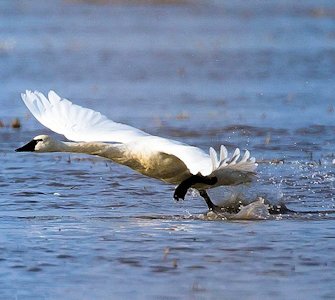
|
Birds Fleeing From Danger
A simple and direct means of avoiding predators is to flee, which is the reason
many small birds have such quick reflexes. The sudden burst of a Cooper's Hawk
across a clearing or over a backyard feeder area will produce a frantic flash
of movement as small birds scatter to the shelter of surrounding bushes. If the
predator is a mammal, this fleeing response is even more effective since the
small birds are safe as soon as they fly clear of the predator's grasp. It is
only when the bird have nests or chicks nearby that this escape becomes more
complicated. A few large birds or birds with formidable weapons, such as hawks
or owls, may stand up to potential predators, but for most birds, fighting back
is not an option. Smaller birds must reach safe refuge if pursued, or must
remain at least out of reach of a less mobile predator, which may keep adults
away from their eggs or young for long periods. One example of this behavior
was observed in Massachusetts at the site of a nesting colony of terns. A Great
Horned Owl, which began hunting adult terns every night, forced the terns to
abandon their nests at night and to incubate only during the day. Although
the hatching was considerably delayed, it was still successful.
|
| Tundra Swan Flees |